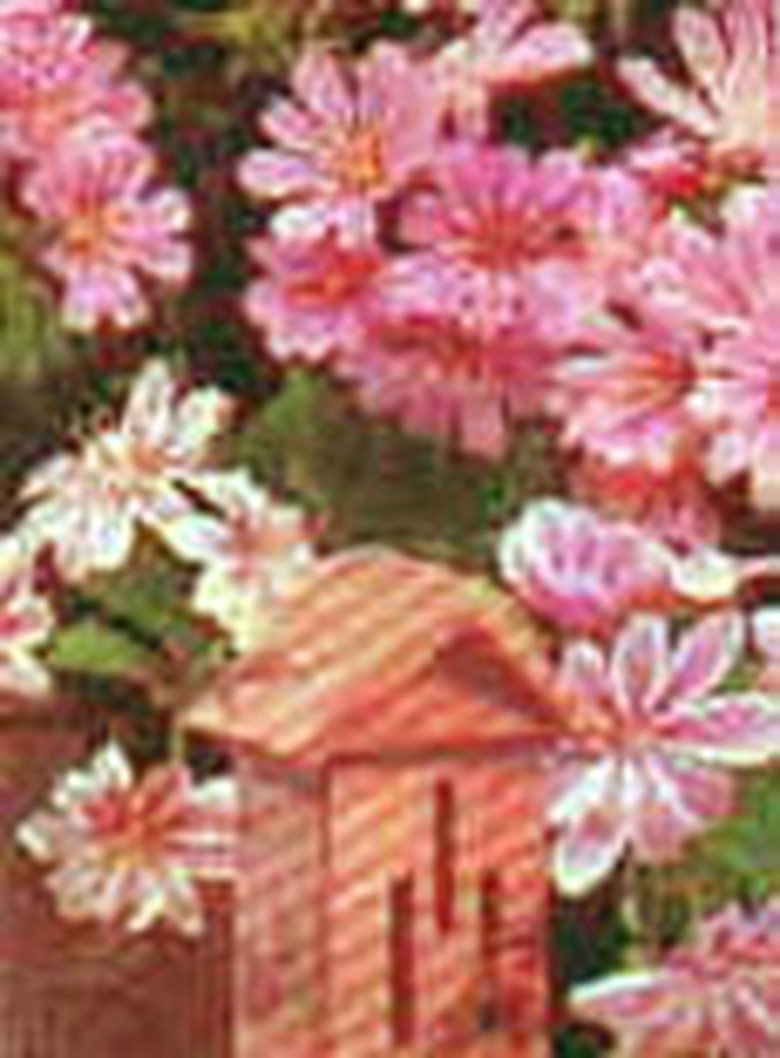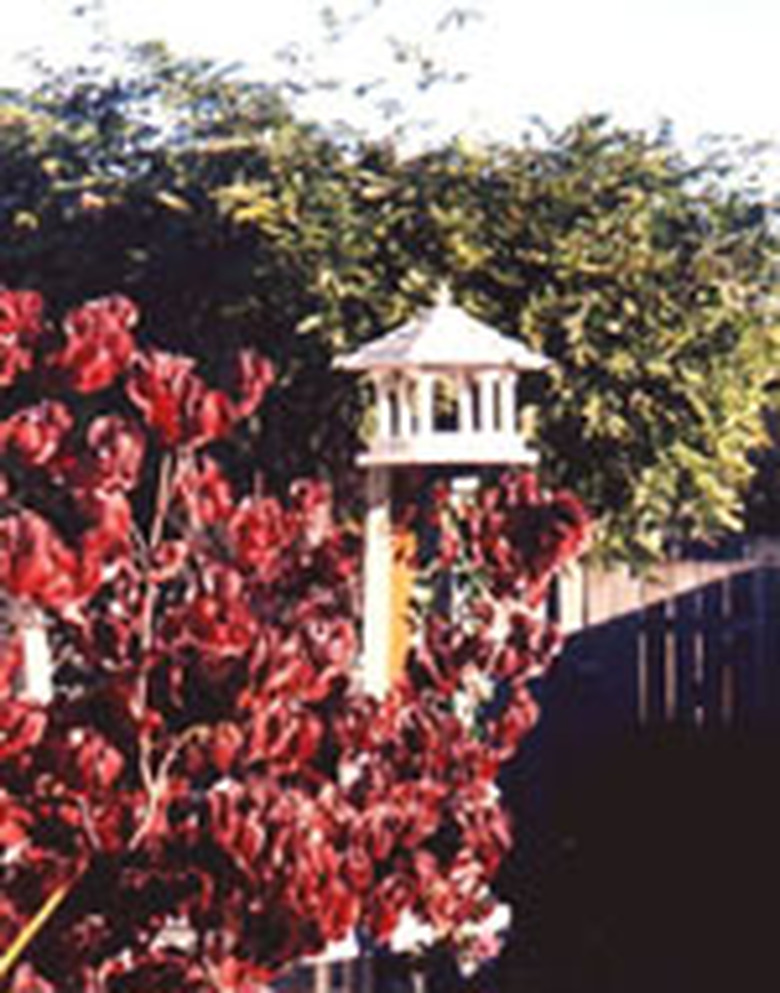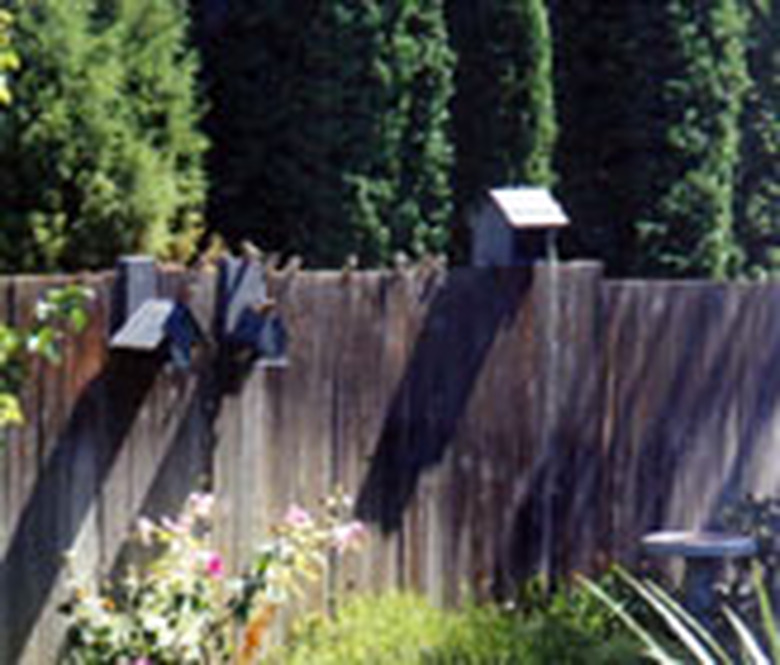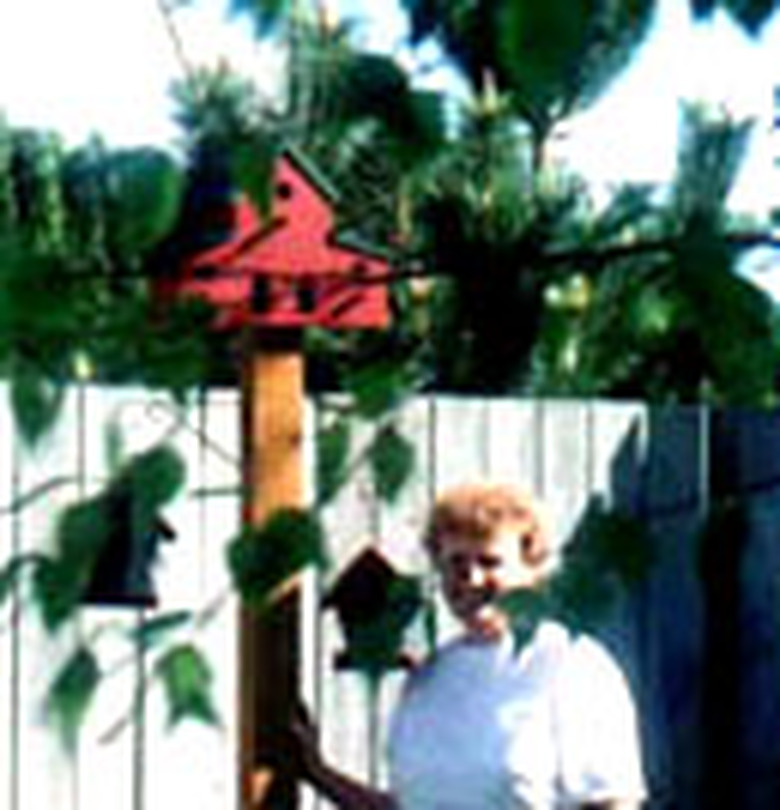Hibernation Boxes: Do Butterflies Use Them
by Naomi Mathews
Recently, I have been asked about the effectiveness of placing a butterfly house or hibernation box in gardens or back yards. The two most common questions I hear are: (1) do butterfly houses attract butterflies; (2) do butterfly hibernation boxes provide the butterfly a place in which to hibernate?
Since I have never placed a butterfly box in my own flower garden, I began to give these questions some serious thought. I know our birdhouses and bird feeders function very well, because a wide variety of feathered visitors frequent them throughout the year.
**What about butterfly houses? Do butterflies really use them?**
- by Naomi Mathews Recently, I have been asked about the effectiveness of placing a butterfly house or hibernation box in gardens or back yards.
You have probably seen many butterfly houses in your favorite garden store, in magazines and gardening catalogs, and on the Internet. Maybe you've been sneaking peeks at the adorable one your neighbor just placed in his flower garden. Or, perhaps you already have one in your own garden, and you're waiting for some evidence that "flying flowers" are using it.
I've certainly seen many of them, as they have become quite popular. They are without a doubt very attractive and make a great adornment to one's back yard. I have to admit that not too long ago I found myself begging my husband, "Honey, would you build me one of those cute little butterfly houses . . . please?"
- You have probably seen many butterfly houses in your favorite garden store, in magazines and gardening catalogs, and on the Internet.
- Maybe you've been sneaking peeks at the adorable one your neighbor just placed in his flower garden.
Being the practical man my husband is, he simply replied, "Why would butterflies need a house? Butterflies don't make nests like birds do to lay their eggs in, do they?"
I saw the mischievous twinkle in his blue eyes, the quick smile on his handsome face, and knew he was teasing me. And I had to admit that butterflies don't need "nests," knowing they instinctively lay their eggs on their favorite host plants. Then, I suggested to him they might need a "house" to retreat in on cloudy or cool, windy days. Butterflies are definitely sun worshipers and really dislike wind and cold. Going a step further, I hinted that perhaps some butterflies might even overwinter in such a house, then come out in early spring to lay their eggs.
- Being the practical man my husband is, he simply replied, "Why would butterflies need a house?
- Then, I suggested to him they might need a "house" to retreat in on cloudy or cool, windy days.
Well, I tried–and my husband knows I've had my eye on a charming butterfly house for a couple of years. It couldn't hurt to try one or two. After all, our back yard is already overflowing with birdhouses and feeders of every style and color that he has designed and built as "his hobby." Knowing him, I realized he would probably NOT build me a butterfly house unless I could prove there was a "practical" reason.
So, partly out of curiosity, but moreso to give a knowledgeable answer to my friends and readers, I did a bit of research about butterfly houses, also called "hibernation boxes." Let me make it very clear that I have not become an expert about the hibernation needs or habits of the exquisite butterfly through my limited research. Therefore, I will only present a few pros and cons I learned about this still controversial subject and let my readers take it from there.
Dissenting Views About the Effective Uses of Butterfly Houses
Terri W., an enthusiastic butterfly gardener and one of my loyal readers from Pennsylvania, shared her own thoughts as well as comments from others about the effective use of butterfly houses. Terri wrote me this note:
- Well, I tried–and my husband knows I've had my eye on a charming butterfly house for a couple of years.
"About the butterfly houses . . . I too have heard that they don't do so well in drawing butterflies. According to what I have heard, a piece of banana and wood bark need to be placed inside the house. . . . All the people I have spoken with have said the same thing–it isn't worth it. I personally won't get one."
- "About the butterfly houses .
- .
- .
- All the people I have spoken with have said the same thing–it isn't worth it.
Another personal response about using butterfly hibernation boxes was received from Nathan B. of Austin, Texas. His response was:
"If by 'hibernation boxes' you mean butterfly houses, no scientific but lots of practical. I've never seen them used by any butterflies. We even put rotten fruit in them to no avail. Just another thing to sell. Plain old bird feeders with a pan and rotten fruit works great if hung in the full sun."
- Another personal response about using butterfly hibernation boxes was received from Nathan B. of Austin, Texas.
- I've never seen them used by any butterflies.
An exceptional article by Claire Hagen Dole, Hibernation Boxes: Do They Work?, is one every butterfly enthusiast should read. Ms. Dole shares not only her expertise about the dynamics of butterflies and their caterpillar babies, but also her viewpoints about the use of hibernation boxes as opposed to providing natural habitats for butterflies. In her extremely enlightening article, she quotes Robert Snetsinger of PSU on this subject, who wrote:
"I have yet to see evidence to support the notion that butterflies actually need or use butterfly houses. My suggestion is, if you want to do something useful for butterflies, build them a mud puddle." (Reported in Butterfly Times, Dept. of Entomology, 501 ASI Building, PSU, University Park, PA 16802.)
Another article, Wild Birds Unlimited, Education: Butterfly, offers some excellent suggestions on butterfly gardening. Regarding butterfly houses, the author writes:
". . . They [butterfly houses] can be used as a roost in the summer months as well and as a shelter in the winter months. However, there are very few documented reports of butterflies actually overwintering in hibernation boxes."
Probably one of the most credible statements about butterfly box use is found on the "Frequently Asked Questions" page of the National American Butterfly Association web site.
**Do butterfly boxes work?**
- They [butterfly houses] can be used as a roost in the summer months as well and as a shelter in the winter months.
- However, there are very few documented reports of butterflies actually overwintering in hibernation boxes."
"Unfortunately, no. While so-called butterfly boxes can be attractive, and do little harm, studies have shown that butterflies do not use them in any way."
The NABA points out that at night or during stormy weather, butterflies tend to find natural shelter where they can roost. Such shelters can be found between rocks, in deep grass, or other such natural hiding places.
I highly recommend reading Rick Mikula's excellent article, Butterfly Houses. Rick aptly points out that there is certainly no harm in using a butterfly house (he states he has one!), and that they do add charm and beauty to flower gardens.
Following my research on butterfly houses or hibernation boxes for the sake of the butterfly, I was fairly convinced I really didn't need one. However, one thing became very apparent to me. Gardeners are not the only people inquisitive about the use of these charming houses or boxes. Entomologists continue to seek new methods of preserving the mystical "flying flowers."
- While so-called butterfly boxes can be attractive, and do little harm, studies have shown that butterflies do not use them in any way."
- I highly recommend reading Rick Mikula's excellent article, Butterfly Houses, and that they do add charm and beauty to flower gardens.
Supporting View About the Effective Use of Butterfly Houses
A supporting view about butterfly houses or hibernation boxes was found at Environmental Tips: Butterfly Beauty. The writer reports that butterfly boxes may offer shelter from predators and severe weather, as well as a place to hibernate or nest. He advises gardeners to place their butterfly boxes about four feet above ground and making sure they have a southern exposure in the wintertime. You will find simple instructions on how to build a butterfly box here.
My Personal Viewpoint
As a gardener, I have many differing viewpoints from those of my next door neighbor. About flowers, about shrubs, about trees, about grass, about fences, and quite possibly, about butterfly houses! This makes life even more interesting, don't you think?
- Supporting View About the Effective Use of Butterfly Houses A supporting view about butterfly houses or hibernation boxes was found at Environmental Tips: Butterfly Beauty.
I don't see any real harm in having one or two butterfly houses to mingle with our many birdhouses. You see, I am equally as curious as my husband is practical. I would really like to see if can outsmart a butterfly! I've often heard it said that a butterfly goes wherever it pleases, and pleases wherever it goes. And maybe, just maybe, one will break all the butterfly rules and fly into MY butterfly house. I've also heard it said that there has to be a first time for everything. Even for butterflies!
- I don't see any real harm in having one or two butterfly houses to mingle with our many birdhouses.
So perhaps, before the summer is over, I will have one or two in my garden. They would definitely add variety to my back yard decor and make a great conversation piece. Also, my family and friends will be aware that I have a butterfly-friendly garden. Lastly, I think a beautiful butterfly house would lend a bit of mystique to my garden.
In summary, I believe all gardeners should reserve the right to make their own decisions about placing a butterfly house in their garden. If the butterfly can fly free with its wings of irridescent color, gardeners should be allowed to do the same. Don't you agree?
- So perhaps, before the summer is over, I will have one or two in my garden.
- Lastly, I think a beautiful butterfly house would lend a bit of mystique to my garden.
A word of caution. If you are using or planning to use a butterfly house, you should be watchful of "unfriendly" inhabitants taking up residence in it. Be forewarned that placing overripe fruit or nectar inside the house to attract butterflies may bring more bees than "butters" to visit or hibernate! People have also found spiders, wasps, ants, flies, and a variety of other noxious insects residing in them.



